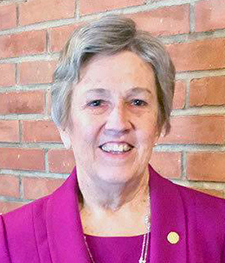Families across America’s heartland have had a difficult year and a half. The COVID-19 pandemic, the economic troubles it caused, and an ongoing labor shortage have made it more difficult than ever for America’s hardworking families in rural and agricultural communities to unlock the full potential of our modern economy.
This is especially true for those communities that disproportionately lack access to affordable and reliable broadband internet. To secure a future of prosperity for America’s rural communities, we need to completely bridge the digital divide and ensure every American has access to the digital technologies that support success in our modern world.
Substantial positive investments toward achieving the national goal of bridging the digital divide through broadband deployment, financial support for broadband service and digital skills training were included in the bipartisan Infrastructure and Jobs Investment Act recently passed by the U.S. Senate. Now, America’s rural communities are counting on the U.S. House of Representatives to swiftly pass this package, including the $65 billion down payment on closing the broadband gap.
The broadband investments included in the bipartisan infrastructure package and additional permanent solutions are urgently needed.
Take Minnesota, for example. According to the Federal Communications Commission, whose data Republicans and Democrats agree underestimates the scale of the digital divide, at least 140,000 Minnesotans lack access to broadband. A separate study from BroadbandNow finds there are as many as 440,000 Minnesotans who lack access to a broadband connection. A third analysis, looking at how people use the internet rather than service, found that more than 2 million Minnesotans do not access the internet at speeds meeting the definition of broadband.
Nationwide, nearly one-fourth of Americans in rural areas still don’t have access to broadband, and rural adults are less likely to have multiple connected devices. As many as 29 percent of American farms still lack broadband access.
The challenge is also not limited to rural areas — and substantially impacts every American community that lacks broadband access for all. In urban Minneapolis for example, one quarter of households facing the greatest income insecurity have no access to broadband as a result of affordability challenges.
This gap, wherever it exists, prevents too many Americans from accessing digital tools in education, health care, workforce development, small business, precision agriculture and much more.

A majority of voters from across the political spectrum support the bipartisan package and 62 percent of Americans believe broadband funding must be a part of all infrastructure spending packages.
We encourage House lawmakers, including Reps. Jim Hagedorn, Angie Craig, Dean Phillips, Betty McCollum, Ilhan Omar, Tom Emmer, Michelle Fischbach and Pete Stauber, to swiftly pass the Infrastructure Investment and Jobs Act and then build on the positive momentum for action by advancing additional solutions, like ensuring financial support for broadband is enough for families in every community to afford service.
Every American community, especially those in the heartland, is counting on their leadership to bridge the digital divide.
Betsy Huber lives in Oxnard, Pa., and is president of the National Grange of the Order of Patrons of Husbandry. The National Grange has been strengthening individuals, families and communities through grassroots action, service, education, advocacy and agriculture awareness for more than 150 years.
WANT TO ADD YOUR VOICE?
If you’re interested in joining the discussion, add your voice to the Comment section below — or consider writing a letter or a longer-form Community Voices commentary. (For more information about Community Voices, see our Submission Guidelines.)


0 Commentaires